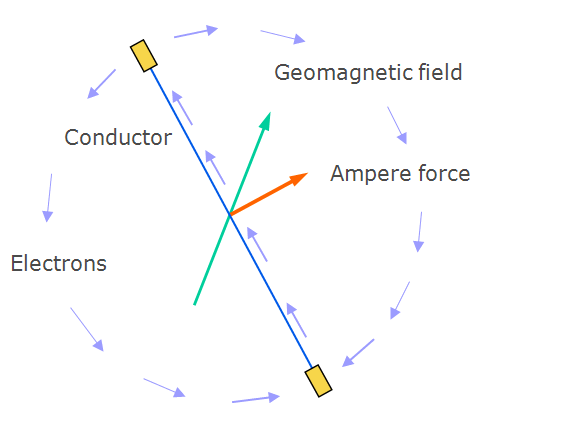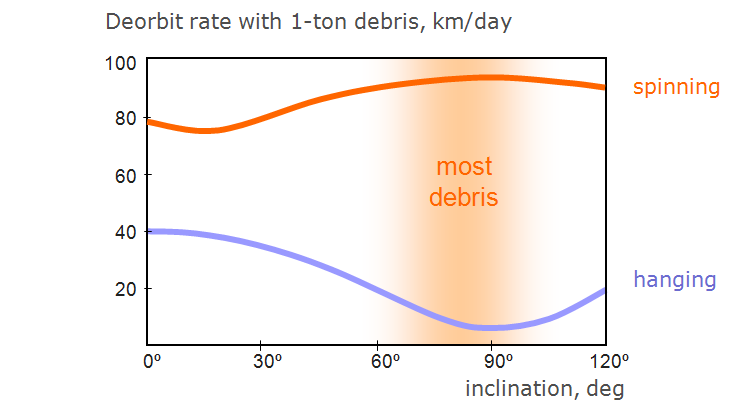Electrodynamic Propulsion
The electrodynamic thrust is the Ampere force acting on a conductor in the geomagnetic field. Electrons are collected from the ambient plasma on one end and emitted back into the plasma from the other end. The electric current loop is closed through the ionosphere. Electron collection can be achieved by biasing bare metal surfaces, while electron emission can be achieved by using hollow cathodes, thermionic emitters, photo-cathodes, field emitter array cathodes, or other devices.


- Electrodynamic Propulsion Requires Electron Collection and Emission
Being propellantless, the vehicle is not limited by the Tsiolkovsky rocket equation and can produce enormous delta-V's of hundreds of km/sec over its operational lifetime. This makes it a leading candidate for in-orbit trucking
of various payloads, including wholesale debris removal and secondary payload deliveries requiring large plane changes.
One of the design layouts of a spinning electrodynamic system developed by Tether Applications, Inc., includes two end-bodies with controllers and electron emitters, and multiple power nodes with solar arrays, all connected sequentially with reinforced bare aluminum tapes. The design is modular, lightweight, and allows compact stowage.

- A Conceptual Design Layout of the Electrodynamic System
The entire structure rotates slowly at 6-12 revolutions per orbit. This gives stability and better angles between the conductor and the geomagnetic field, especially in high inclination orbits. All orbital elements, as well as the tether rotation and vibration, can be controlled by varying and reversing the currents in the sections of the conductor. Using solar power, the vehicle can make large orbit changes in a fairly short time. In deboost mode, additional energy can be extracted from the orbital motion through the emf, substantially increasing the thrust capability. It is very useful in debris removal.

- Spinning Improves Performance of the Electrodynamic System
The chart above compares altitude rates of the spinning system and a conventional vertically oriented system dragging down a 1-ton debris object. The difference is drastic, especially at high inclinations, where most of the large debris is concentrated. There are two reasons. First, for a vertical electrodynamic system to remain stabilized and controllable, the thrust must be an order of magnitude less than the tension produced by the gravity gradient, while the spinning system can apply all the thrust it is able to produce electrically. Second, a vertical system cannot produce much of a thrust along-track in near-polar orbits because of the orientation of the geomagnetic lines, while the spinning system can spin normal to the orbital plane and get very good traction
with the geomagnetic field.
A system of this type called ElectroDynamic Debris Eliminator (EDDE) has been matured under the NASA Game Changing Development Program of the Space Technology Mission Directorate.
 Electrodynamic Technologies
Electrodynamic Technologies